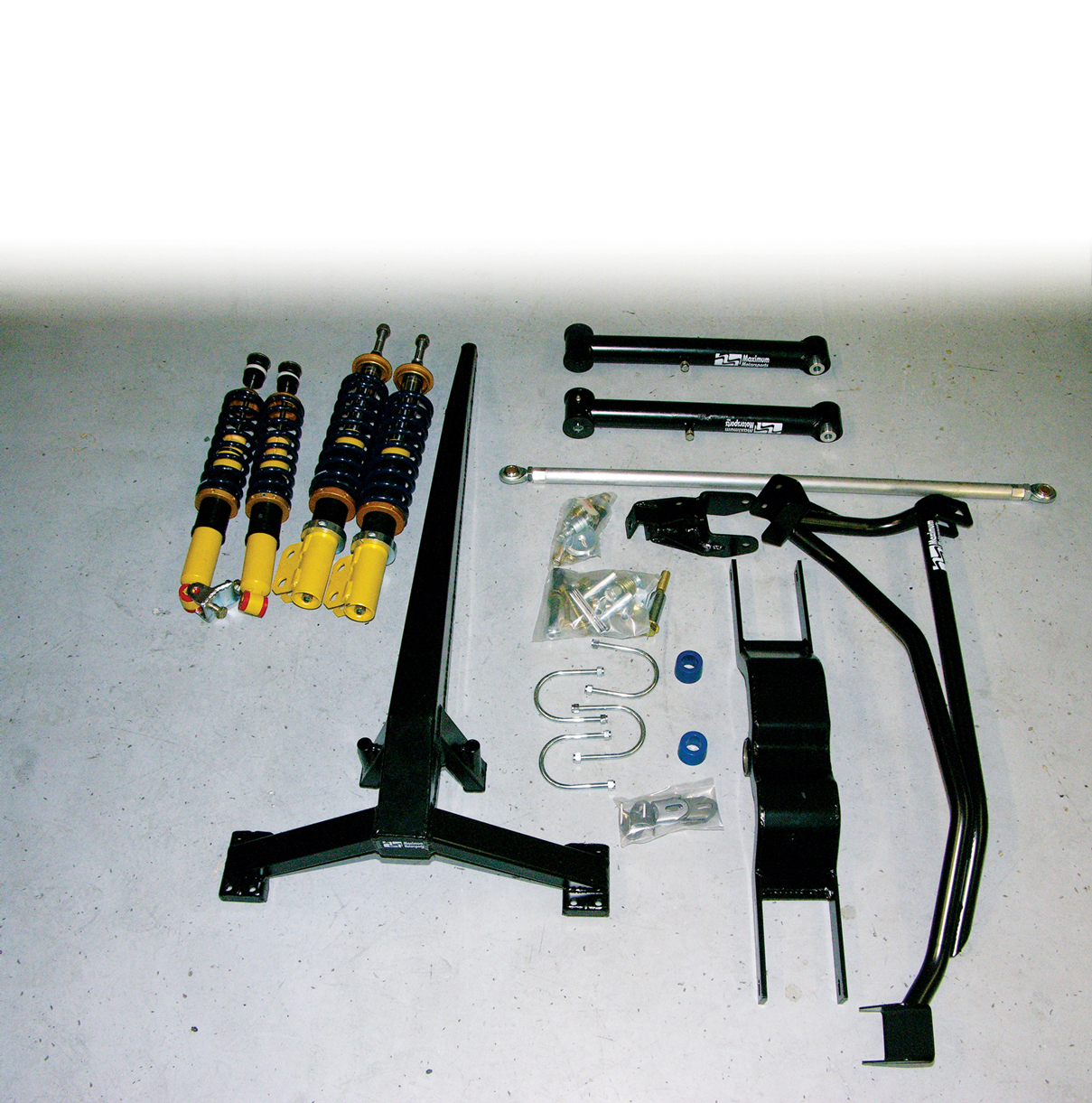Chassis

Maximum’s design replaces the upper control arms with a torque arm and a Panhard rod, each of which has only one job rather than two. The Panhard rod centers the axle from side to side, and the torque arm controls pinion angle. Assigning each of these duties to separate components allows each piece to be better at its one job than the stock upper control arms are at either job. The torque arm is essentially a three-link design, and Maximum claims that it improves traction so much that after installation you may have to alter your sway bars to prevent understeer.

Although modifying a car to handle well can often seem like a black art, virtually every aspect of handling comes down to three things: the weight of the vehicle, the traction generated by the tires, and the distribution of weight on each particular tire at a given moment.

Improving your new Mustang doesn’t have to be an arduous affair. You’re supposed to enjoy working on your car, RATHER than dreading getting off work because you “have” to wrench on the Ford. With that attitude in mind, we recently spoke with Al Kamhi, of Control Freak suspensions, to get his advice on what enthusiasts could do to further the concept of upgrading a Mustang in just an hour or two. But there’s a catch: the upgrade had to make a real difference in the car’s performance.

Even more than 40 years ago, Ford understood the importance of preventing body flex in order to allow a suspension to maintain proper geometry. The earliest Mustangs came with front shock tower braces to prevent uncontrollable suspension articulation, caused when both upper ends of the shock towers flex inward. The need to prevent such flex is still important today, and the principle applies to the rear shock towers as well as to the fronts.







